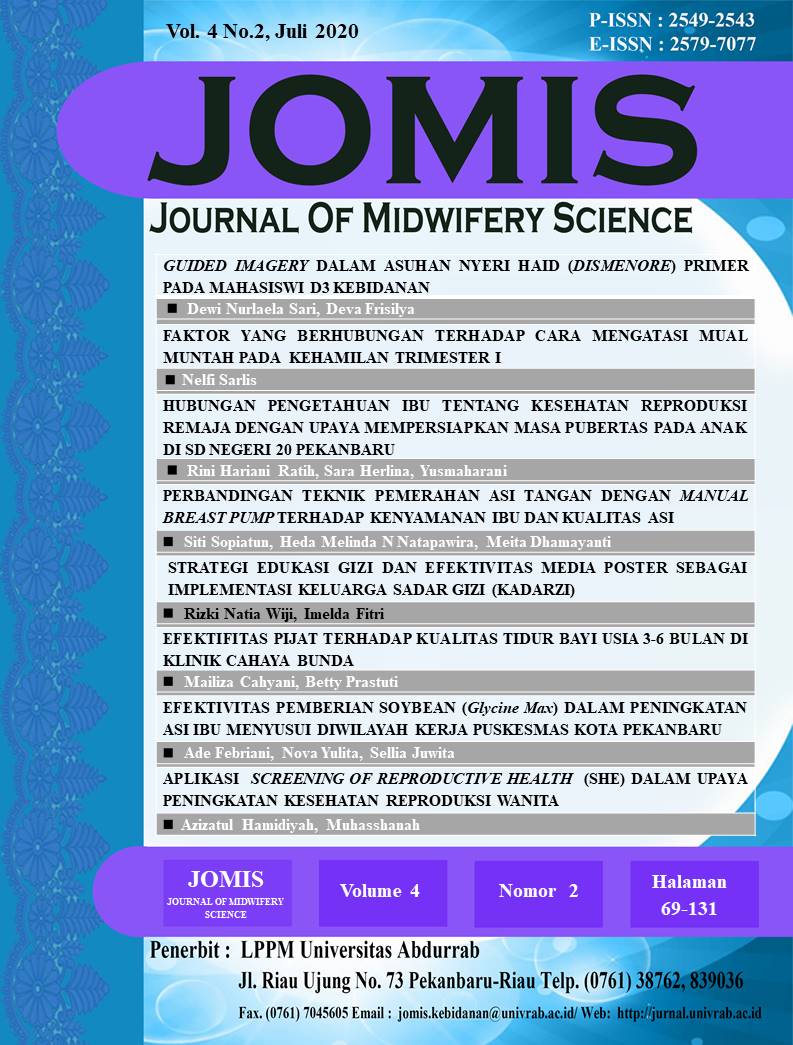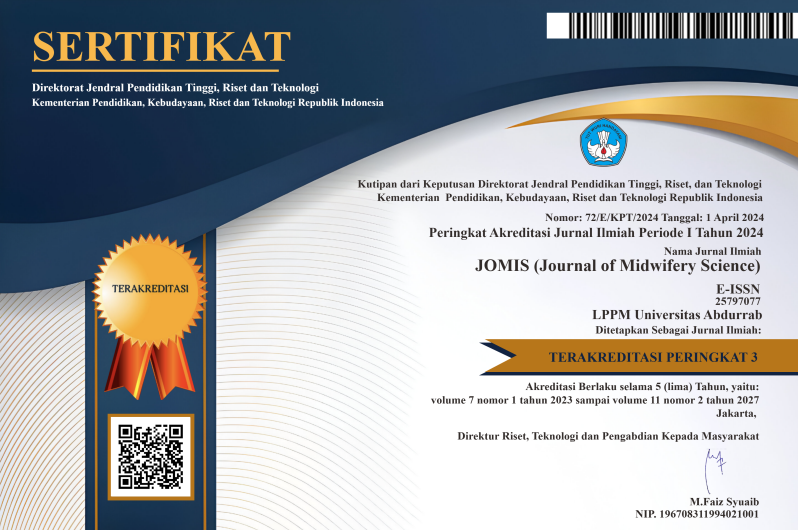PENGARUH PIJAT TERHADAP KUALITAS TIDUR BAYI USIA 3-6 BULAN DI KLINIK CAHAYA BUNDA
DOI:
https://doi.org/10.36341/jomis.v4i2.1358Keywords:
Massage, Baby, Sleep QualityAbstract
Sleep is a top priority for babies, because this is when neuro brain repair occurs and approximately 75% of growth hormone is produced. One of the methods that can be used to fulfill your baby's sleep needs is with a massage. Babies who are massaged can sleep soundly, whereas when they wake up, their concentration will be fuller. In a preliminary study conducted on mothers who have infants aged 3-6 months stated that babies often wake up and cry every 1 to 2 hours of sleep, and babies are also less sleepy if the mother moves away from the baby. Research methods: quantitative analysis with quasy experiment research type. The population of this research is all infants aged 3-6 months who visit the maternal light clinic, amounting to 68 babies. The sampling technique used is total sampling. Data collection by doing massage, observation and questionnaire. The purpose of this research is to find out how effective massage is to sleep quality of babie, where with chi square statistical analysis with a degree of confidence 95% p = 0.05 obtained an effective massage to improve the quality of sleep of infants with (p = 0.003).So that it is good for Kilinik to apply baby massage as a routine care for babies and can be one of the standards of care that can provide the fulfillment of the need for security and comfort in babies.
Downloads
Downloads
Published
Issue
Section
License
1. Copyright of all journal manuscripts is held by the JOMIS : Journal of midwifery scinece
2. Formal legal provisions to access digital articles of electronic journal are subject to the provision of the Creative Commons Attribution-ShareAlike license (CC BY-NC-SA), which means that JOMIS : Journal of midwifery scinece is rightful to keep, transfer media/format, manage in the form of databases, maintain, and publish articles.
3. Published manuscripts both printed and electronic are open access for educational, research, and library purposes. Additionally, the editorial board is not responsible for any violations of copyright law.
licensed under a Creative Commons Attribution-ShareAlike 4.0 International License.










